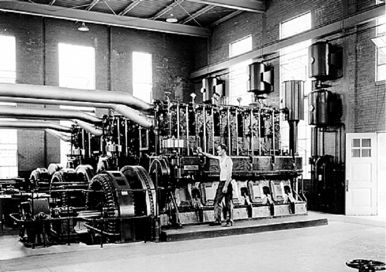By
Scott B. MacDonald
 Summer
is over and it is time to go back to work. We think that September
is going to be a good month for the equity and corporate bond
markets. The bulls clearly want to run. Despite the summer meltdown
in U.S. Treasuries, the power blackout and the vacation season,
corporate bond spreads were driven tighter in August by a combination
of good economic news, the possibility that the new bond issue
pipeline could be relatively light due to incrementally higher
borrowing costs and the absence of any major negative geo-political
news. This combination also proved to be a tonic for the stock
market, with the Dow consistently staying above the 9,000 mark
for several months now – and recently even surpassing 9,500.
The NASDAQ has also perked along, reflecting renewed investor
interest in technology. Equally significant, the IPO market is
beginning to show signs of life. According to Bloomberg, IPOs
over the last two months totaled $10 billion, four times the first
quarter of 2003 and higher than the $9.1 billion seen in the second
quarter. We expect these trends to continue through the fall --
possibly into next year. At the same time, we also see a lot of
things that remain problematic and portend tough challenges later
in 2004.
Summer
is over and it is time to go back to work. We think that September
is going to be a good month for the equity and corporate bond
markets. The bulls clearly want to run. Despite the summer meltdown
in U.S. Treasuries, the power blackout and the vacation season,
corporate bond spreads were driven tighter in August by a combination
of good economic news, the possibility that the new bond issue
pipeline could be relatively light due to incrementally higher
borrowing costs and the absence of any major negative geo-political
news. This combination also proved to be a tonic for the stock
market, with the Dow consistently staying above the 9,000 mark
for several months now – and recently even surpassing 9,500.
The NASDAQ has also perked along, reflecting renewed investor
interest in technology. Equally significant, the IPO market is
beginning to show signs of life. According to Bloomberg, IPOs
over the last two months totaled $10 billion, four times the first
quarter of 2003 and higher than the $9.1 billion seen in the second
quarter. We expect these trends to continue through the fall --
possibly into next year. At the same time, we also see a lot of
things that remain problematic and portend tough challenges later
in 2004.
First, at least on the surface, the outlook for the U.S. economy
is looking better. Durable goods orders are up; new home sales
reached their second highest level in history during July and
early August; and manufacturing in August expanded at the strongest
pace in eight months. Inventories are also being depleted at a
faster pace than earlier thought. Even global semiconductor sales
are up, rising 10.5% in July, the fifth straight monthly gain.
All of this is reflected in GDP numbers: real GDP for Q2 was revised
from 2.4% to 3.1%, well above consensus. We think real GDP will
be in the 3.6% range for the rest of the year, moving our estimate
of growth from 2.4-2.6% to around 3%. There is something to be
said about pumping liquidity into the system. Even the World Bank
is more bullish, looking to stronger growth next year based on
a revival of world trade, stronger domestic demand in most countries
and an ebbing of international tensions.
In addition to more positive economic data, the geo-political
environment – while remaining fraught with peril – has
not heated up to the point that it is disturbing the fervor of
investors who remain intent on bidding up equities – which
continue to trade at historically high valuations. Yes, terrorist
attacks are occurring in Southeast Asia and the Middle East, and
North Korea remains a challenge. However, negotiations with North
Korea continue, key Islamic radicals were arrested in Southeast
Asia and Saudi Arabia, and some form of Israeli-Palestinian dialogue
continues. We also expect the United Nations will eventually assume
a greater role in Iraq, which could help to stabilize the situation.
From equity and corporate bond market standpoints, the improvement
in economic data and a perceived reduction in international tensions
are sending the signal that the recovery is sustainable.
Nevertheless, while we think that economic growth has room to
run, not everything is positive. For a full-fledged recovery we
still need to see sustainable gains on the employment front. We
take note of a recent statement by the National Association of
Manufacturing that the recovery for U.S. manufacturers is "the
slowest on record since the Federal Reserve began tracking industrial
production back in 1919." Some 2.7 million manufacturing
jobs were lost over the past 36 months. What is needed to reduce
unemployment and stabilize manufacturing employment is a long
awaited and still anemic return of capital spending. If this occurs
during Q3, the recovery could gain further momentum in Q4 and
2004. In addition, the U.S. deficit is heading into record numbers.
While this is not a concern in the short-term, it could have long-term
consequences, especially if measures are not taken to deal with
the situation.
 There
is also the issue of the state of U.S. utilities. The August power
outage that hit the United States and Canada was a major shock
to the American public and demonstrated that the North American
utility sector has problems. In fact, the blackout indicated that
the U.S. system of regulating utilities, a mix of feudal-like
local authorities and a less than forceful federal regular, the
FERC, combined with some poor management teams sprinkled across
the country, is dangerously offline. The result was that billions
of dollars of business was lost, either in closed restaurants,
spoiled grocery store goods or powerless factories. Idle factories
do not produce durable goods. It is now estimated that $60-100
billion is needed to upgrade the U.S. utility system.
There
is also the issue of the state of U.S. utilities. The August power
outage that hit the United States and Canada was a major shock
to the American public and demonstrated that the North American
utility sector has problems. In fact, the blackout indicated that
the U.S. system of regulating utilities, a mix of feudal-like
local authorities and a less than forceful federal regular, the
FERC, combined with some poor management teams sprinkled across
the country, is dangerously offline. The result was that billions
of dollars of business was lost, either in closed restaurants,
spoiled grocery store goods or powerless factories. Idle factories
do not produce durable goods. It is now estimated that $60-100
billion is needed to upgrade the U.S. utility system.
While everyone agrees the system is in need of repair, consensus
ends when it comes to who should pay and want kind of system is
required. For much of the U.S., utility industry times are hard.
Many of the companies already have large debt loads, are cutting
costs, and selling non-core assets. Rating agencies have been
bearish. While these same companies often purchase energy on deregulated
markets, they sell power at controlled prices (and are unable
to pass on any price increases). Local political establishments
are active in protecting the consumer. Consequently, Washington
has the potential to be a gridlock on utility reform – with
the Democrats declaring that the Republicans are in the pocket
of greedy utility companies and want to pass reform legislation
that will open up federally protected lands to oil and gas exploration.
For their part, the Republicans are grousing that the Democrats
want state intervention and control – basically a socialist
approach to an already troubled industry. To some extent both
sides are right. Therefore, we expect a lot of talk over the utility
industry in the months to come, but real action with big price
tags will be slow. In this case talk is indeed cheap – at
least until the next power outage.
Despite the concerns over unemployment (still in the 6% area),
growing budget deficits, and potential energy problems, the Bush
administration is geared on pushing enough liquidity into the
system to make certain the recovery gets its feet and moves –
at least until the November presidential election. As we have
stated all along, the impact of the federal government pumping
billions of dollars into the economy will stimulate growth. The
trick is to have enough stimuli to allow the consumer an opportunity
to consolidate debt and rebuild savings, which must be balanced
with renewed capital spending. The latter is beginning to happen
very gradually. For the Bush administration the bottom line is
to grow the economy and win re-election. Beyond that policy priorities
are focused on the war against international terrorism and stabilizing
Iraq. Dealing with the federal deficit is a low priority, though
this could become a major drag to the economy in the medium to
long term. However, the Bush administration’s request for
emergency spending of $87 billion to finance operations in Afghanistan
and Iraq and the probability that the budget deficit could be
equal to 4.7% of GDP, are not positive signals on fiscal management.
This puts the upcoming fiscal deficits in the same ball park as
the record fiscal deficits of the early 1980s. Fiscal prudence
is being sacrificed for political expedience.
The bottom line is we are constructive on both the equity and
corporate bond markets in the short term. For the latter the probable
scenario is one shaped by generally tighter spreads, a modest
new issue pipeline, and generally positive economic headlines.
Although some companies have probably opted not to go to the market
to issue debt due to slightly higher rates, we think that rates
remain historically low and are likely to go up as the year continues.
While the improving economy is likely to pull money out of the
bond market and into equities, there will still be enough money
in bonds to make September a positive month for bond market returns.
As for the stock market, the bulls want to run and they will in
the short term. If the momentum continues through September and
sentiment becomes firmer in the belief of a sustainable recovery,
the bulls could continue to run through the end of 2003 and 2004.
By early 2004, the main concern for economic policymakers will
no longer be deflation, but the possibility of looming inflation.
Indeed, in 2004 the U.S. economy could be heading into a period
of stagflation, in which a rising fiscal deficit and rising prices
are matched by little or no growth in the employment area. Consequently,
we say ”Viva los toros!” ; at least for now.



